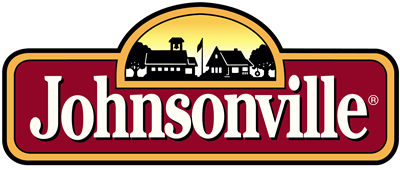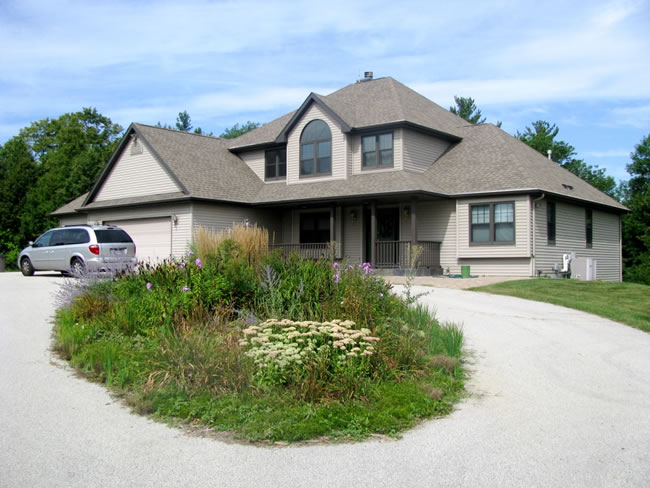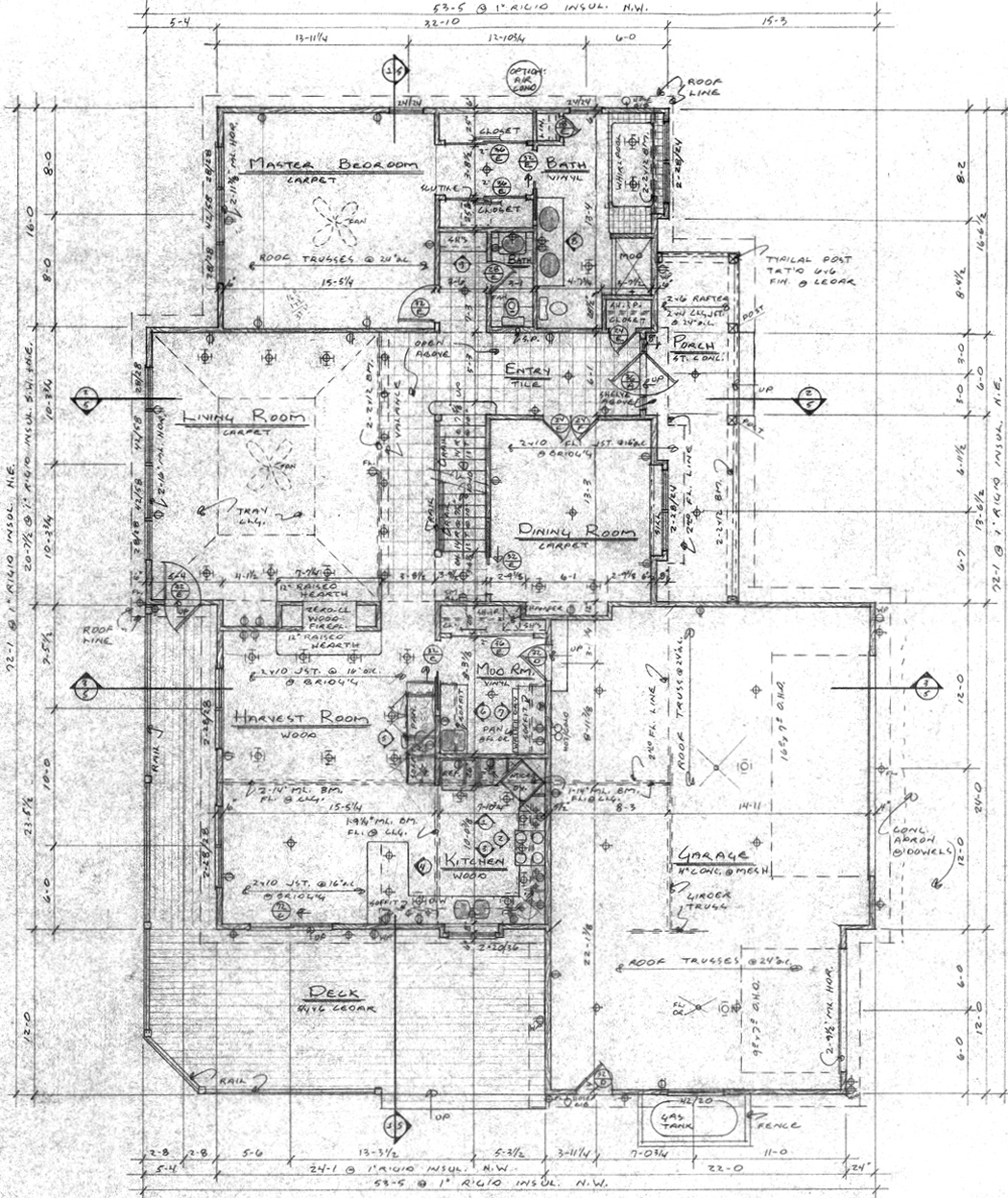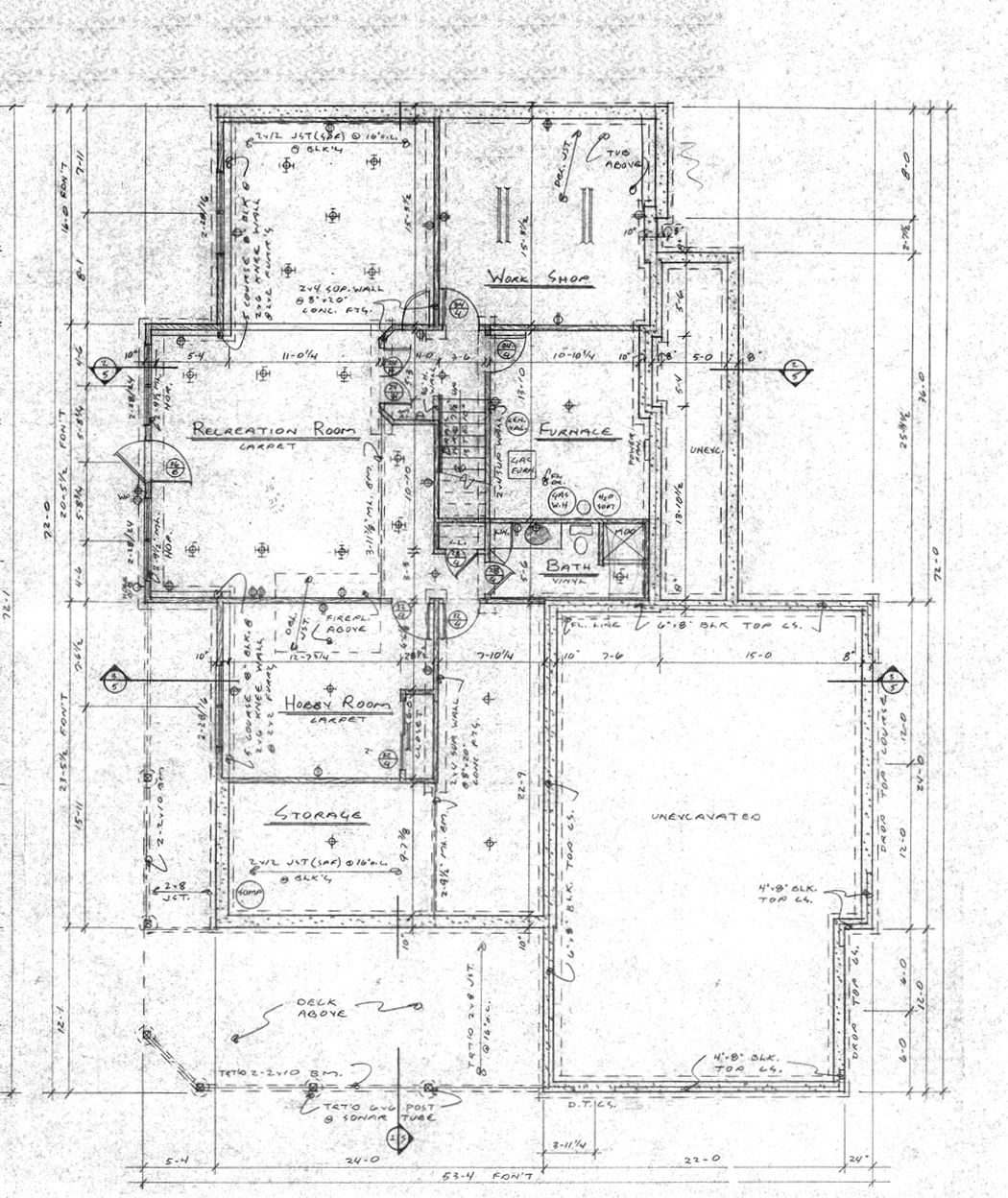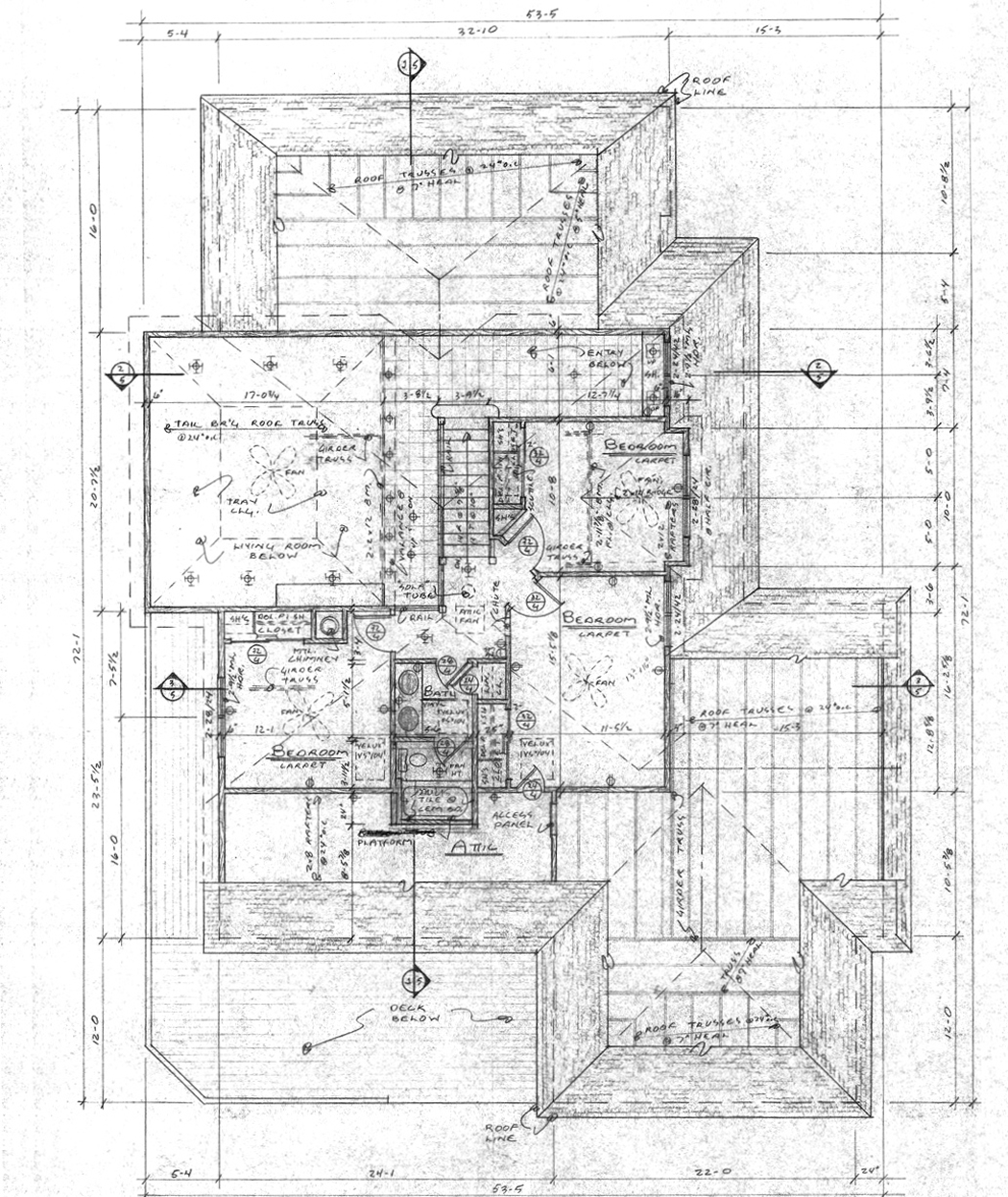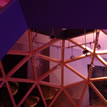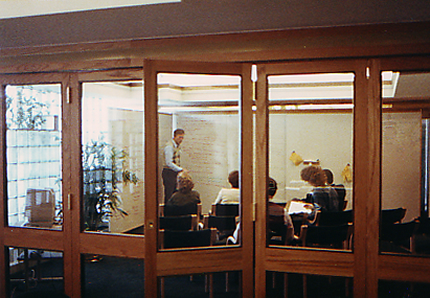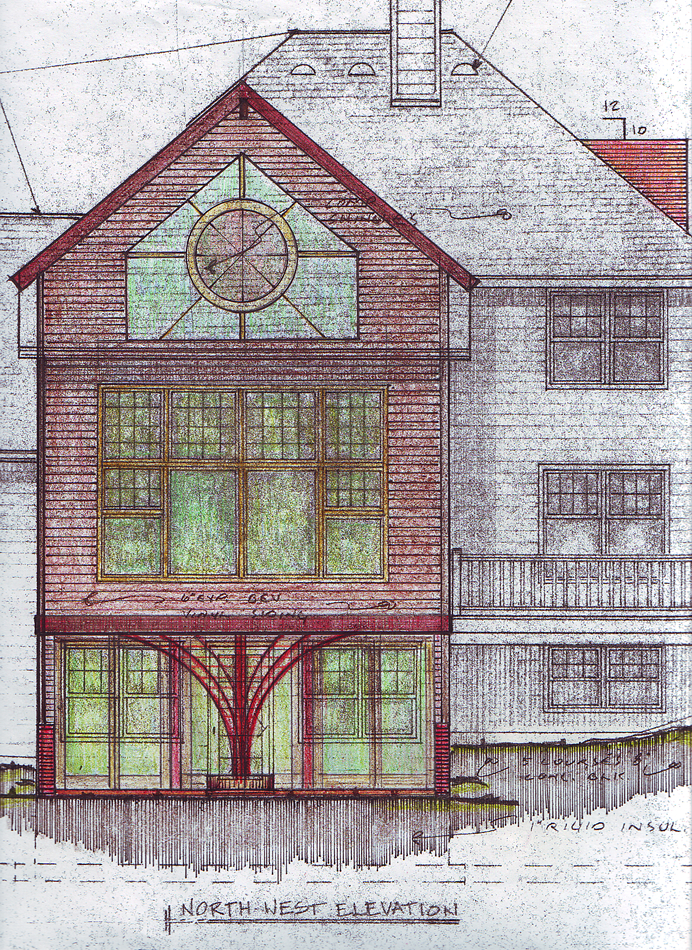 |
return to: Johnsonville navCenter
COMMONS MY JOURNEY |
|
 |
return to: Johnsonville navCenter
COMMONS Program Statement |
|
 |
| return to:Johnsonville navCenter COMMONS INDEX |
|
 |
return to: Johnsonville navCenter
COMMONS FEEDBACK |
|
 |
return to: Johnsonville navCenter
COMMONS REFERENCES |
|
|
Johnson navCenter
AS IS Drawings and Photos |
|
 |
return to: Johnsonville navCenter
COMMONS Schematic Sketches |
|
 |
return to: Johnsonville navCenter
COMMONS Phases & Schedule |
|
Johnsonville navCenter |
|
C O M M O N S |
As Is Drawings and Photos
with analysis of the building’s prospect |
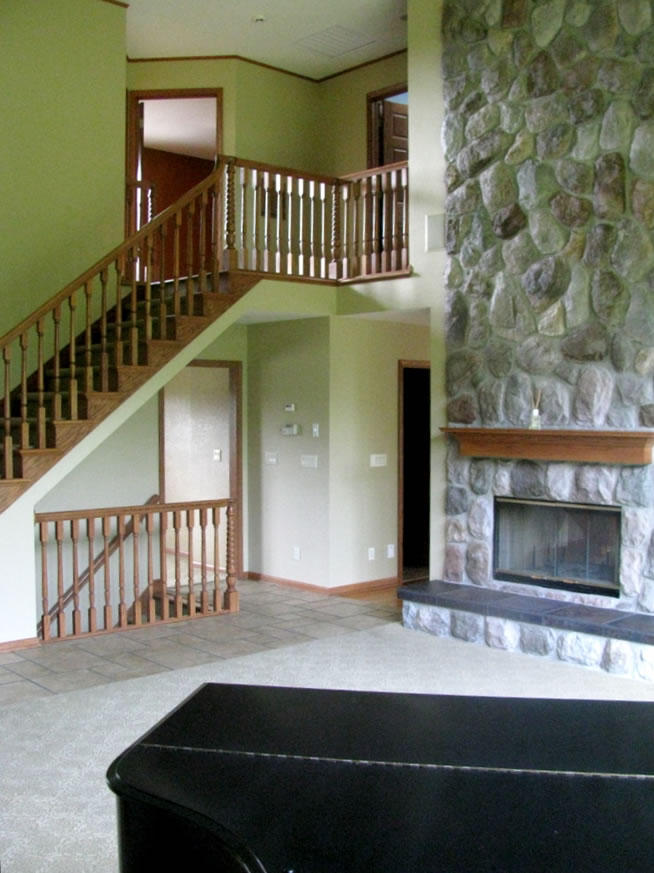 |
| Using the Palomares home for the new Learning and Development facility is a good idea. And, this is one of the reasons which attracted me to the project in the first place. That said, there are interesting architectural challenges and opportunities generated by this choice which do not lead to simple solutions. |
| These challenges fall into three broad categories: The constraints of traditional domestic spaces - given the requirements of the intended reuse of the building as a learning and collaboration environment. Certain mechanical, electrical and structural conditions - given the requirements of use and long term sustainability. The message of the place - given the philosophy, aspirations and emergent possibilities of the Johnsonville way. |
These challenges are not positive or negative - they are conditions. The body of work of which this page is a part is the first iteration Program Statement. The Program Statement, as a work, creates a problem to be solved. It is a beginning framework - it is not a limit - of the further iterations of the creative process until a built work is achieved and used. |
click on icons for further reading: |
|
| the 4 Step ReCreation Process |
|
|
| the Solution Box Architecture |
|
The house has context and meaning. It expresses ideas. A new use requires a new architectural message. |
|
|
| Photos show that the light into the rooms of the house is generous from all exposures. However, given the new use and not having domestic furniture requirements such as beds, a few added windows will open the space greatly. |
|
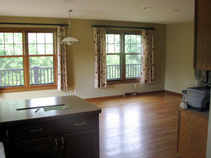 |
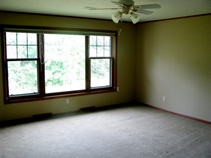 |
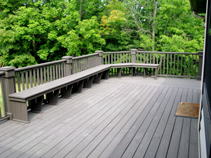 |
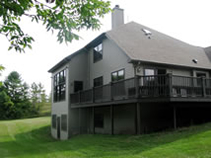 |
|
General comments on the house in terms of its suitability for re-use as a learning and collaborative design environment:
The house is sited perfectly for this purpose. It is in walking distance of the Administration Building yet, because of landscape, has the sense of an off site facility. The property on which the house is placed is generous and allows for a variety of outdoor recreation and team building stations. The rear of the house faces a river and this will be the view off of the proposed Radiant Room and the existing Deck Area. A critical design question is how to property access the facility. Given the number of potential users at any given time, parking for all will materially mar the feel of the landscape. At the same time there are legitimate concerns that access be made easy. It goes without comment that a path over the earth berm connecting the new Commons with the Administrations Building and close by production facilities is a great opportunity to create an appropriate travel experience. How much parking should be supplied for those requiring ADA access, response to weather conditions, and to accommodate Members coming from off-site, has to be carefully thought through. A balance is necessary. |
| Such parking that is provided should be as green as possible, arranged into small groupings and generously landscaped. Otherwise the result will be a once-residence-transplanted onto a commercial site - a wrong, mixed message. |
| For its new purpose, the existing main entry - both exterior and interior - requires reworking. It is to be expected that the CyberCafe will become the most used informal Entry into the facility. Other access routes can be provided around the sides, one to the Deck and the other to the Terrace off the Lower Level Classroom(s). These will also assist in meeting certain code requirements for assembly use. The present front door ENTRY can become the formal, ceremonial entry point. The addition of some trellis (exterior) and soffits interior) elements can “bring out” this function to the appropriate level and better inform Members of how to come into the environment. |
| In general, the house must embrace the landscape far more than now - both from an interior and exterior perspective. The environment mush SHELTER yet not exclude. |
|
|
The Main Level layout can be adapted for its intended reuse by making the following alterations:
Open the space so that the existing Master Bed Room, Living room and Harvest Room (to the Kitchen edge), can function as one space and still be divided into separate spaces. I refer to this combined space as the Radiant Room. This concept also includes expanding the existing Living Room five to six feet at the window wall and removing the fireplace. By ending Radiant Room space at the mid point of the existing Harvest Room, there will remain a Food Preparation and Serving Area which can serve the Deck Area and also supplied from the Deck when activities require it. The Radiant Room will be employed for large group processes - interactive learning and design - and the break out work spaces associated with these activities. This will be integrated with the space below - referred to as the Recreation Room on the plans - which can also be used independently as design space and a formal Class Room depending on configuration (see notes below). |
| The Existing Entry will remain the Formal Entry with some minor interior and exterior alterations necessary to serve this function given the nature and volume of user traffic. The exiting Dining Room can be converted to serve three functions: Reception Area, Conference Room and KWIB (see Program Statement). The room will quickly reconfigure to do this although each function will be able to co-operate in a variety of ways. This room is designated as The KWIB. |
| The existing Garage to become a 24/7/365 CyberCafe which is always open to all Johnsonville Sausage Members and selected ValueWeb partners. This space will be a greenhouse environment (with appropriate glass extensions at the garage door openings) with coffee bar, group-scale media, private workPODs, Library, conversation area and fireplace. It will be configurable for individual and informal group study and work. As such, it will become the informal Entry into the building. This opening will also be on of many means by which the existing building cn be modified to embrace the landscape. |
| For a schematic layout of these alterations, go to SKETCHES. |
|
|
|
The character of the property and its adaptation to its new function present interesting challenges and opportunities:
Modern residences tend to be broken up into a series of specific purposed rooms. This means that even the largest of houses tend to be composed of relatively small rooms which present awkward shapes for interactive learning and collaborative work groups.
|
| Fortunately, the layout, as noted on the right Design Proposals, provides two opportunities to create large, flexible spaces, one - the Master Bedroom, Living Room and half of the Harvest Room - becoming the Radiant Room - on the main floor and the second opportunity directly below it on the lower floor. Opening these room creates a long narrow aspect. This will serve for the lower level Class Room(s) not for the Radian Room. By projecting the exiting Living Room wall out five or six feet a “T” shaped space is created, passage can be accommodated at the stairway, and a variety of arrangements can be facilitated. This “T” will also work well with the vertical space making this area far more interesting. A ROOM will be created which can configure into two different two-room layouts, and additionally, a three room layout. This spatial variety can better meet the variety demand of the processes taking place within it. The new projection, and the corner glazing it provides, will also contribute to the goal of “opening” the space to the environment. |
| “Bill has tunnel vision.” “Mary was thinking in a box.” “My back was against the wall!” Common pejorative comments which actually describe the build spaces which we are to be productive and creative within! Interesting. Yet, it is thought, environment does not effect thinking. |
| This raises the aspect of what is this building saying? What messages are embedded in its form, shape, materials, textures and idioms? What social and personal denotative and connotative meanings will be surrounding Johnsonville Members as they learn and co design? Will the building be an active agent in support of the Johnsonville Way or a contradiction to it? |
|
|
The Lower Level layout can be adapted for its intended reuse by making the following alterations:
The existing Recreation Room to become a Class Room which also serves and an adjunct space to the Radiant Room on the the floor above it. The Class Room has to be configurable in a variety of ways from presentation to highly interactive set ups. This space is also ideal as a state-of-the art media room. Media should be disbursed throughout the facility, however, this is an ideal place for the Center of this technology to reside.
|
| The existing Recreation, Hobby, and the third, unnamed room exactly echo the proposed radiant Room above with the exception of the 5 to 6 foot cantilever. These three spaces, like upstairs, can function as three, two, two room setups, or one space without compromise to any one of these four possible of configurations. Foldout WorkWalls™ will add additional variety and work utility. In terms of phasing, this space and the the Garage to become CyberCafe will be developed in Phase One with the Main level Radiant Room finished as part of Phase Two. This would require some structural adjustments in the floor between the two levels so that future development does not disturb use. |
| The entry-exit and relationship to the stair way from this space has to be reworked as it is too cramped and lacks the Pattern Language of ENTRY. This should not be difficult and some arrangements will be posted on the Sketches section to deal with this. These are modest alterations. This room has a window wall looking out into the “rear” yard toward the river which has to be opened up and the Terrace off of this room should be developed for out door activities. A trellis worked in with the proposed 5 to 6 feet cantilever of the Radiant Room above can combine to make both rooms embrace the outdoors rather than send the message of being distinct and recluse. These factors related to how the existing house interacts with this landscape are discussed further in the Elevations Section (below). |
|
|
|
To explore this question of what messages and memes an environment sends consider the metaphor:
Architecture is frozen music.
|
| Not a bad use of analogy except that architecture is not experienced as frozen any more than music is. Architecture has two aspects: the thing and the nothing. Denotation is direct, fact-based and objective. Something is massive or delicate, big or smaller, rough or smooth, simple or complex, and so on. Connotation is the intrinsic to all humans, interpreted by cultural and individual experiences, meanings which are connected to the forms, shapes and materials. An icon is a gestalt of these many factors. One sees, hears and smells a physical space and in this the music metaphor holds up. In addition, we all use facilities within an environment and move through its space and therefore experience movement and rhythm. Just like music - actually dancing to music - these journeys also convey meaning. |
| Knowing this it is possible to create architecture of great variety and nuance. Unfortunately, this is rarely the case. The vast majority of our built environment is a mishmash of mixed metaphors, contradictory messages, icons reduced to cliches, materials with little substance and texture, dissonant forms, total confusion of prospect and refuge and all of this misplaced in its relationship to the activities going on in the space. If you have sailed a boat in what is called a “confused sea” you have a perfect example of contemporary architecture except that most of us have been conditioned to shut off the messages. Our architecture is - when it is not blatantly shouting at us - literally turning us off. You have to step out of the human built environment, remove yourself to Nature, or go to a truly great cityscape or stay awhile in a fine work of architecture to “remember” what has been lost. The build environment should be an exciting and comforting landscape which stimulates, adjusts to activities as appropriate, and sends messages congruent with what we are doing within it. As we are charged to learn and design in this environment - should we be surrounded by mistakes, poor craftsmanship and examples of botched problem solving? Are we to courageously design our future to be requisite with a explosively changing world while sitting in a box passively looking at a power point presentation about the future? Can we relax, expose ourselves and be open to create team in a place that is intrinsically hostile to our evolving nature? No. |
| The building we have here does have many of these flaws. It also has many virtues. It is a residence which has some messages supportive of this reuse and some contrary to it. It is off site in feeling and this is good. It does send too many “at home” signals and this is not good. It is not - yet - capable of being the right space, providing the right utility and message(s) for the full range of processes which will take place within it. Fortunately, we can build on the strengths and make minimal the weaknesses. This very design challenge, itself, makes a creative tension which is useful for producing our desired outcome for it it the thought, craft and energy which is invested into a work which brings it to life. |
| Phase One gets us started with a capacity greater than the present facility affords. It also sets the vector of the rest of the project. Phase Two, brings the environment up to full utility and builds out spaces to support a full menu of learning, collaborate design and work modalities. Phase Three, building upon the first two, finishes the process of transforming the building and its landscape into a high fidelity expression of the Johnsonville Way. |
|
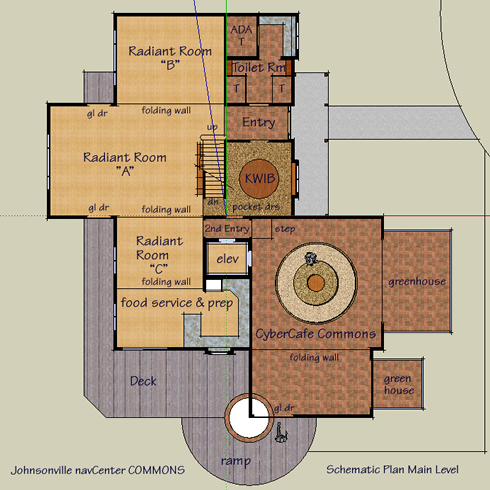
click on drawing to go to schematic plans and narrative |
| The sketch of the main level illustrates How the re-use of the house can be accomplished by transforming the space internally, as well as, how it relates to its landscape. Also, safety, code and and ADA issues are addressed. |
Taking the photos on the right - not literally - as examples of the quality of place which can be created in a structure like this - and think through the kinds of spaces the new floor plan affords - it can be seen that the variety, which I mentioned before in this column, is provided. Prospect is looking out to a universe of unlimited opportunity. Refuge is finding a safe niche where there is protection and comfort. In architecture, prospect is created by what is called spatial ambiguity, the eyes wandering through layer after layer of almost-seen, interesting objects and spaces. Refuge is made by small, semi-enclosed closed areas with limited access and bountiful tools, and amenity. Both of these are primal. Both are necessary for a human to prosper even as each of us will have our own sense of prospect, refuge mix and personal ways of perceiving and responding to a space. Architecture functions by the use of denotation and connotation. It is important in a public space and a corporate space that the message is such at all those who use it experience many direct symbols, messages and memes that they can relate to and connect to their memory and future work. Else, they will never be grounded in the environment to the great determent of the learning and collaborative work processes in which they are engaged. Think about how often you remember something in reference to a place, a time, a smell, or within the context of an experience. Memory is distributed throughout the brain and in fact you do not “remember” you recreate the old experience combining it, and its context, with what you are thinking and doing today - thereby, creating a new experience and altering the old one(s). The body/brain/mind is a rich web and it is impossible to separate one from another nor from the environment in which they function at any moment.
|
|
| the Function of Architecture |
|
|
|
| Learning and collaborative Workspace |
|
|
| Architecture works, on the intimate level, by creating a continuum between what in everyday experience are often disconnected domains. Architecture has to deal with the philosophical and social aspects of life to the intimate levels of a personal work station or work team environment and all the levels in between. There must be continuity in the built environment so that all these many different experiences, and the tasks each person in engaged in at any moment, suns up and makes sense within the workplace, home and human culture. It is important for a building to keep the rain out and to make sure that all matters of utility are properly addressed. If that is all a building does, however, it falls short. These considerations address the importance of the thought process which must go into the development of a project’s Program Statement. |
| A long familiarity with “buildings,” and their various types, can induce us to jump right into the design process without reflecting about what we are doing or why. As a simple example, for decades the maker and users of buildings long ignored energy and ecological considerations as impractical other than their direct short term measurable personal economic consequence. Now, the sum of millions of such individual decisions presents us, in a time of energy crisis and global warming, a huge task in the rebuilding of our infrastructure. |
| Habit can be the enemy of good architecture. Every work should persevere as well as create social memory and provide a strong sense of a past, present, future continuity. Every work also must reflect its time and address the needs of that time. Every work has the mandate to be easily adaptable and changeable as requirements will change as individuals and society change. This is particularly important in this era of both alienation and rapid change. Both social memory and the ability of ready adaptability have to be achieved together. Authentic forms, authentic materials, and authentic use - conceptual, perceptual, tactile, - become the raw materials of these memories. |
| The navCenter Commons history will grow over time. This will be the accumulation of all the experiences generated within its walls. It will be the third wave of Johnsonville transformation - which I speak of in the Program Statement - the amalgamated past present and future memory. |
|
|
The Upper Level layout can be adapted for its intended reuse by making the following alterations:
The three Bedrooms will make excellent Offices for the Learning and Development Team members. Some modifications at the hallways can allow these Offices to have the option to be closed off or open to one another. Their layouts also can be made far more flexible - to serve all of the office work functions not just the few which have become the default standard. The modern knowledge worker/leader has a large number of work roles and functions which have to be supported. Some can be supported in the large group and team areas of the navCenter Commons. Some, only in personal work spaces open to one another, some only in personal work spaces which are possible in personal refuge mode. These distinctions are covered in the Program Statement. |
| The office reconfiguration is definitely Phase One work. |
| The risk is that the offices can easily be “office furniture is a bedroom” having the ubiquitous home office function and look. This would sub optimize the utility of these offices and also send entirely the wrong message. Another risk is that the upper level offices feel detached from the activities of the main and lower levels. While user controllable degrees of privacy - visual, sound and degree of prospect-refuge - must be maintained, it is essential that the offices be engaged and interactive with each other, the rest of the building space and the general landscape in which the Commons is set. Creative learning, work and collaboration it dramatically effected by setting and context. Office spaces too often tend to lose this. Rooms designed to serve - size, shape, materials, viewing in and out orientation - the modern concept of Bedroom reinforce this tendency particularly when “converted” to an office. |
| By opening the hallway between the Bedrooms-to-become-offices and providing sliding partitions-doors; By, where possible, providing openings (with screens and sound shutters) from the offices looking down into the large group areas; by opening window and enhancing-adding skylights-light tubes; By employing Armature and room-within-a-room techniques - all of these risks can be eliminated - the Office spaces can be made into stellar workplaces. While not to be taken in the specific, below are some examples of architectural scale WorkFurniture™ application which illustrate these points: |
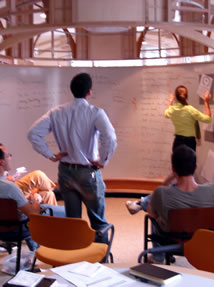 |
Each of the photos show aspects of methods which would allow the three Bedrooms on the upper level function as one integrated space and a three individual work areas with good visual and acoustic privacy.
This will require reducing the Bathroom to a Toilet Room, expanding one BR over the CyberCafe, extending the landing platform slightly so that a single space is created - at the top of the stairs - which provides open space and circulation around the Elevator. When their sliding wall-doors are opened, the three rooms will “read” as one space with three private work areas converging as a collaborative work experience. This is much more congruent for the the Johnsonville Way and for the relationship of the Learning Center Team Members than will three rooms which separate their energy. It also provide one more intimate collaboration work space of which there will not be too many when this project is finished.
By providing an armature across these three room several qualities are accomplished: Lighting can be provided which can be controlled to fit mood and level of light to the work at hand; The sliding, folding partition-doors will have track to run on; The vertical space, in conjunction with skylights and light tubes, can be enhanced by the room-within-a-room space which will work, in combination with the adjustable “look down” openings, vertically and horizontally to remove the somewhat crowded feeling inherent in the existing structure.
The actual private areas and workstations,of the three team Members will be bach in the three corners of this space situated to look diagonally toward the center common area. This does several things. It emphasizes the diagonal principle which will open the sense of space greatly; it facilitates semiprivate working while still allowing eye contact; it opens the walls for openings, book cases and WorkWalls; it easily affords the closing of the space into two or three rooms.
The stairway to the main level we require some modification in order not to impinge as much as it does into what will be the main focal point of the Radiant Room.
What is relevant about the photos shown here is how the WorkFurniture and Armature pieces, while providing many utility functions, shape the space of the rooms and transforms the character of the space. The reason for a meaning of the space is revealed in it structure.
Two of these environments are home workplaces the others are business and medical environments. Their construction spans 18 years. All of them use one aspect or another of space-within-a-space and some form of Armature. All employ the same basic construction grammar.
When the individual “offices” are built, they will be adapted to the specific requirements of each individual Member occupant. This will be done, however, with an eye to the universal principles behind the requirements and the spaces will be design and built for easy reconfiguration. Work spaces last beyond the term of any individual. |
In principle, the Office spaces are no different in flexibility, utility and amenity, from the larger group areas yet they are contained in an more intimate space. In fact, the three offices can be quickly configured into a mini design center of their own for their occupants and and few guests.
While PODs will not be employed in their full form, POD-like skins can be used to “close” the private work areas and “open” them to the larger common area(s). These rounded closures will fit to the existing square walls making us of existing corners. Workstations, tables and storage units will roll making reconfiguration easy. Armature “arms” will bring lighting to appropriate places as well as define the spaces. It may well be that it is with the Office spaces that we will establish the scale and “look” for the entire interior retrofit while being a direct algorithm of the Johnsonville management philosophy. |
|
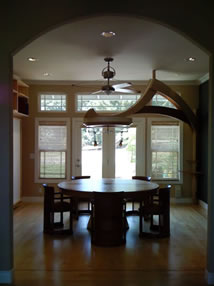 |
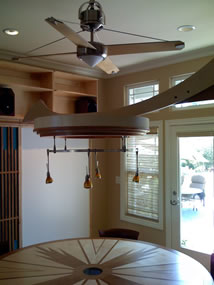 |
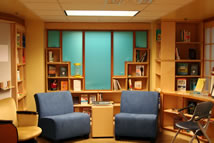 |
 |
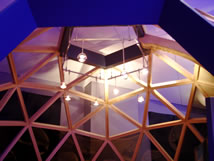 |
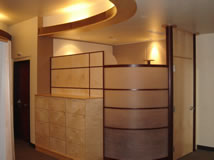 |
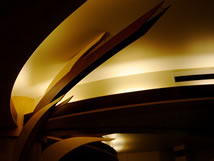 |
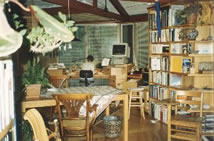 |
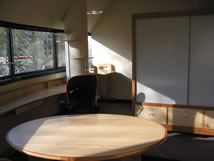 |
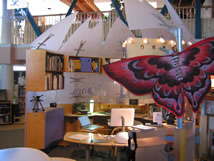 |
| An example of the folding walls with double doors in them is this set, of five, built for the Capital Holding DesignCenter, in Louisville, 1987. |
| Overall, this variety can be produced with economy by employing a modular and platform approach to design, manufacturing and construction. In order to do this, a Design/Build/Use process must be in place which supports the integration required for success. In principle this D/B/U. process can be created to address many projects of many scales, locations and of building types. In practice, it has to modified and adapted to each specific project. It is the fitness between the design solution of the building and the process of its execution - which is very sensitive to time, local place and the present economy - which determines the actual time and cost to build. The primary factor for this to happen is the execution of what we call the System Integration Function. |
| For a schematic layout of these alterations, go to SKETCHES. |
|
|
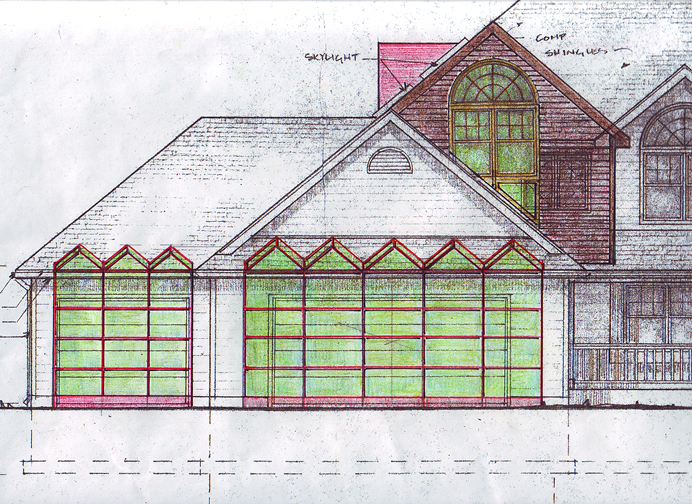 |
| |
These partial Front and Rear Elevations show the major alterations to the house in the Phase I and Phase II work. For full Preliminary Plan Elevations and Sections with commentary, to to part 2 of 3 of this document (note: there has been a minor evolution of what is shown here as we moved from Schematic to Preliminary). On the Front Elevation, The Greenhouses added to the (old Garage) Cybercafe and the projection added to the upper level Leadership Team WorkSpaces is the major work. Not shown is the Security Lobby, ADA ramp and planters at the Entry (see Preliminary Elevations).
The Greenhouses, constructed with steel and glas constitute a new grammar to the exiting building. The upper level, projection as well as the projection on the rear of the house to the radiant Room (old Living Room) both employ elements of the exiting house yet add to them. They will be built with materials and detailing consistent with the objective of ultimately rendering the entire exterior of the exiting house in as much of the Craftsman style idiom as is possible. This is consistent with the building”s new use and the history of the region. The “modern” builder-style residence has no legitimate historical basis no valid future. It is a mixed bag of borrowed styles and mixed grammars.
The projection of the Radian Room accomplishes several objectives: The room is no longer crowded by the stairway and now orients itself 90 degrees - looking to the river- from its present one. It provides a “T” sitting formation for dialogs, report outs and presentations. It distinguishes the rooms - Radiant Rooms A, B and C - when they are divided into individual workspaces. It provides a partial shelter to the lower Terrace - pulling the eye outward - and provides as similar reorientation and distinction to Learning Room A, as it does upstairs, without expanding the foundations and foot print of the house. On the Preliminary Plans, a circular stairway is shown providing direct access from the main level Deck off the Radiant Room to the Terrace of Learning Room A. This stairway also provides ADA emergency exit from the high side of the building. The Terrace created by the projection, plus the new Glass and wood French doors with the extending fin walls at the sides, provides a mix of prospect and refuge now missing from the rear of the building with appears and feels cut off and exposed without “embracing” the landscape in any real way.
The projection also greatly enhances the vertical space of the Radiant Room while resolving the awkward roof configurations now present. In fact, the space created by the addition of the gable roof presents an opportunity for some functional employment of the space. A future technology loft, properly placed, will improve the vertical and horizontal volumes of the room while adding most likely needed future capability. In addition to the utility added, this will reinforce the principle of use-expression integration. The space three dimensional provided must be appropriate for the activity is houses. |
|
|
|
|
for analysis of elevations and sections to GoTo part two of three |
posted:
January 5, 2009 • revised: March 15, 2009 • this document is 95% complete |
|
| Return
to Taylor Notebook INDEX |
|
|
|
|
| Return
to C O M M O N S INDEX |
|
|
|
|
|
|
